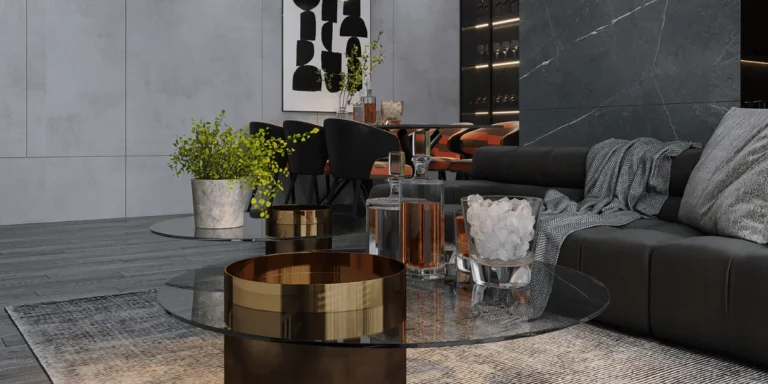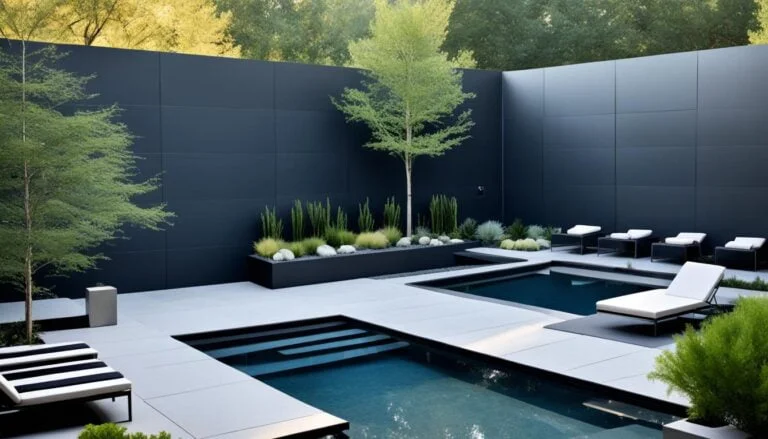Introduction
The Zebra Plant, scientifically known as Haworthia, is a quintessential indoor plant for those who seek to infuse their space with elegance and ease of care. Sporting dark green leaves striped with white tubercles, it’s a compact beauty that can seamlessly blend into a variety of interior decors. In this comprehensive informative, we will delve deep into its care, shedding light on why this plant should be a proud member of your indoor garden.
Zebra Plant (Haworthia) Indoor Plant Details
| Specification | Details |
|---|---|
| Common Names | Zebra Plant, Zebra Haworthia |
| Botanical Name | Haworthia attenuata |
| Family | Asphodelaceae |
| Plant Type | Succulent |
| Mature Size | Up to 8 inches tall |
| Sun Exposure | Bright, indirect light. Can tolerate some direct morning sunlight but should be shaded from intense midday rays. |
| Soil Type | Well-draining soil; cactus or succulent mix is ideal |
| Soil pH | Neutral to slightly acidic (6.0 to 7.5) |
| Bloom Time | Late spring to summer, though indoor plants might not bloom if conditions aren’t optimal. |
| Flower Color | White or pale pink, though the flowers are small and grow on long stalks away from the main plant. |
| Hardiness Zones | 10-11 (outdoor planting). It’s typically kept as an indoor plant outside these zones. |
| Native Area | Southern Africa |
| Benefit | Low maintenance, drought-tolerant, air-purifying, and non-toxic to pets. |
Plant Care
Taking care of the Zebra Plant isn’t an intricate task. In fact, its minimalistic care routine is part of its charm. Like every plant, however, understanding its specific requirements is essential for a healthy and flourishing growth.
Light
Bright, indirect sunlight is the sweet spot for the Zebra Plant. While it can tolerate some direct sunlight, especially during the early morning, it’s vital to protect it from the scorching midday sun which can cause its leaves to scorch or turn a reddish color. A lightly shaded spot or an east-facing window is often considered ideal. If you notice the plant stretching or becoming leggy, it might be a sign that it’s not getting enough light.
Soil
A well-draining soil mixture is paramount for the health of a Haworthia. Consider using a cactus or succulent mix, which provides the ideal balance of organic and inorganic components. The plant is sensitive to waterlogged conditions, so it’s crucial to avoid letting it sit in stagnant water.
Water
The Zebra Plant is a drought-resistant gem, which means you don’t need to water it too frequently. Allow the top inch or two of the soil to dry out before giving it a good soak. Always ensure that excess water can drain away easily to prevent root rot. During its dormant period in the winter, you can further reduce the watering frequency.
Temperature and Humidity
Originating from the South African region, Haworthia is accustomed to mild temperatures. It thrives between 65-80°F (18-27°C) but can tolerate a range as low as 50°F (10°C). High humidity isn’t a necessity for this plant, making it perfect for indoor environments where humidity control can be a challenge.
Fertilizer
Feed your Zebra Plant with a diluted, balanced fertilizer during its active growing season, which is typically spring and summer. Monthly feeding is more than sufficient, and always ensure you’re applying the fertilizer to moist soil, not dry, to avoid root burn.
Pruning
Pruning isn’t a mandatory task when it comes to Haworthia. However, to maintain its compact and neat appearance, you can remove any dead or damaged leaves. This not only improves aesthetics but also ensures that the plant can direct its energy towards new growth.
Types of Plant
Haworthias, often clubbed under the Zebra Plant category, have a vast array of species and varieties. While the most popular is the Haworthia attenuata, often referred to as the Zebra Plant, there are other noteworthy species in the genus:
- Haworthia fasciata – Another similar species, often confused with attenuata. Unlike attenuata, it has smoother inner leaves.
- Haworthia coarctata – A taller, column-like plant with deep green, ridged leaves.
- Haworthia limifolia – Recognized for its unique ridged texture, resembling file marks.
- Haworthia truncata – With a distinct flattened top and translucent “windows.”
- Haworthia reinwardtii – Has a spiral arrangement of its leaves.
Common Pests & Plant Diseases with Solution
- Mealybugs – Small, cotton-like pests that suck sap.
- Solution: Wipe off with a cloth dipped in alcohol or use insecticidal soap.
- Spider Mites – They weave a fine web on the plant and cause yellowing of leaves.
- Solution: Increase humidity and use neem oil or insecticidal soap.
- Root Rot – Caused by overwatering and poor drainage.
- Solution: Let the soil dry out completely and ensure proper drainage. Remove affected parts and repot if necessary.
- Leaf Spot – Manifests as dark spots on the leaves.
- Solution: Reduce watering on the foliage, ensure good air circulation, and remove affected leaves.
How to Get Plant to Bloom
For the Zebra Plant to bloom, consider the following:
- Mature Plant: Often, only mature plants bloom. Ensure your plant has reached its mature size.
- Seasonal Variation: Try providing a bit of seasonal variation by reducing water in winter and ensuring a cooler environment, mimicking its natural habitat.
- Adequate Light: While direct sunlight can harm, bright indirect light encourages blooming.
- Balanced Fertilization: Over-fertilizing can inhibit blooming. Use a balanced, diluted fertilizer and don’t over-feed.
When conditions are right, the Zebra Plant produces a long, slender stem with small, tubular flowers.
Common Problems With Plant
- Brown Tips or Spots: Typically a result of direct sunlight exposure or underwatering.
- Yellowing Leaves: Often due to overwatering.
- Shriveled Leaves: This could be from underwatering or very dry air.
- Leaves Turning Red or Purple: This is a sign of stress, typically due to too much direct sunlight.
- Stunted Growth: Insufficient light or feeding can lead to slow or stunted growth.
Each of these problems can usually be rectified by adjusting the care parameters – be it light, water, or nutrition. Being attentive to the plant’s needs and changes can ensure quick action and restoration to health.
Overwintering
Though the Zebra Plant is a hardy species, it still appreciates a bit of protection during the colder months. Reduce watering and ensure it’s kept away from cold drafts or sudden temperature drops. If you live in a region where temperatures plummet, consider moving your plant to a warmer spot indoors.
Propagating Plant
Propagating the Zebra Plant is a straightforward affair. Pups or offsets often form at the base of the plant. Gently separate these from the mother plant, allow them to dry for a day or two, and then plant them in a suitable soil mix. With minimal care, you’ll soon have baby Zebra Plants ready to grace another spot in your home or to gift to a friend!
Quickly Declining
If your Zebra Plant shows signs of rapid decline, it’s essential to diagnose the problem quickly. Overwatering is a common culprit. Check for soft, mushy roots, and if found, repot the plant after removing the affected areas. Other factors could include pest infestation or exposure to extreme temperatures. It’s always beneficial to revert to the care basics and ensure you’re providing it with its fundamental needs.
Final Impressions: The Zebra Plant’s Charm
There’s no denying the sheer charm of the Zebra Plant. With its striking appearance, minimal care requirements, and ability to adapt to various indoor conditions, it’s a perfect addition to any indoor garden. Whether you’re a newbie to the world of indoor plants or an experienced gardener, the Zebra Plant promises beauty and ease in equal measure.
Frequently Asked Questions
Decode the magic of gardens with our guide to Landscaping Styles Frequently Asked Questions.
- Repotting every 2-3 years is sufficient, primarily to refresh the soil and provide it with more space if it has outgrown its current pot.
- Yes, Haworthias are generally considered non-toxic to pets.
- Browning tips can be a sign of underwatering or exposure to direct, harsh sunlight. Adjust the care accordingly.
- Yes, as long as it’s in a shaded spot protected from the midday sun. Ensure to acclimatize it gradually to outdoor conditions.
Recent Posts
- Modern Mural Ideas Transforming Walls into Artworks
- Thematic Table Decor Dressing Your Table for Special Occasions
- Festive Lighting Ideas Brightening Your Home for the Holidays
- Biodegradable Decor Materials Choosing Earth-Friendly Options
- Personalized Space Decor Making Your Home Uniquely Yours
- New Year’s Eve Decor Ringing in the New Year in Style
- Transforming Junk into Decor Upcycling at Its Best
- Second-Life Decor Objects Giving Old Items New Purpose
- Unique Decoration Crafting Standout Ideas for Your Home
- Environmentally Friendly Styling Decor with a Conscience











